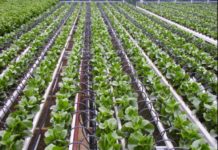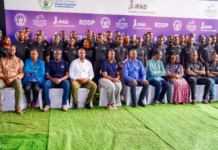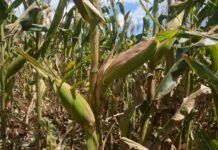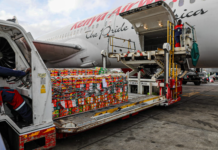
The government of Uganda through the Ministry of Energy and Mineral Development has signed a $400 million deal with Industrial Promotion Services Kenya Limited (IPS) and Norwegian Westgass Internasjonal AS for a green hydrogen-based fertilizer plant, aimed at reducing the country’s dependence on fertilizer imports.
According to Ruth Nankabirwa, Minister of Energy, the plant will be strategically located at Karuma, Kiryandogo District, within Bunyoro sub-region to leverage its proximity with the 600 megawatts Karuma hydropower plant.
“This project extends beyond agriculture realms as we aim to reduce the country’s dependence on imported fertilisers, therefore strengthening economic resilience and sovereignty with an estimated investment of about $400 million (Ush1.55 trillion),” said Nankabirwa during the signing of the pact on Thursday last week.
She added that the project aims to boost nitrogen fertiliser production to approximately 200,000 tons per year and would require around 100 megawatts of electricity sourced from the Karuma power station.
“This fits with the energy policy, which aims to back industrial growth by using electricity,” Ms. Nankabirwa remarked.
She also mentioned that the project is anticipated to generate over 300 direct employment opportunities.
A green pioneer project
The fertilizer that is currently used in Uganda and throughout the region is mainly imported. Natural gas-based production of mineral fertilizers is dominant in the world today and is a major source of GHG emissions. High import prices combined with lack of stable access to local fertilizer makes it hard to develop the local agriculture in the region.
“By establishing local production of sustainable fertilizer, Uganda will be able to become a pioneering country when it comes to adopting green technology, which will ensure economic growth and stimulate local food production while avoiding over 200 000 tons of CO2 per year,” says Kinar Kent, CEO of Westgass.
Access to fertilizer at a reasonable price increases income and food security
Norad has supported the project through a grant. Norfund is initially investing in the project through a convertible loan under the Frontier Facility, aimed at early-phase investments, but aims to invest further as the project develops. Norfund’s goals is to create jobs and improve lives by investing in sustainable businesses. This project will create 300 direct jobs, but have much larger ripple effects.
“We see an enormous potential in increasing the yields of the farmers in the region and thereby providing increased income and food security, without increasing GHG emissions,” said Tellef Thorleifsson, CEO at Norfund.
Uganda’s fertilizer consumption
Uganda’s consumption of fertilizer is between 0,23 and 1,5 kg/hectare, far below the average of 8 kg/hectare in sub-Saharan Africa, and only around 24 percent of agricultural households in the country use mineral fertilizers, according to the FAO. Imported fertilizer is expensive, which makes it more difficult to increase its use, and the price has increased further because of increased gas prices following Russia’s invasion of Ukraine.
“A local production facility for mineral fertilizer will reduce costs and provide greater opportunities to use fertilizer to increase yields, while at the same time reducing the environmental impact,” says Kent.
Solid partners combine industrial expertise and local experience
Norwegian Westgass Internasjonal is the international project development arm of Westgass Hydrogen, a green energy company that focuses on accelerating the transition from fossil fuels in Europe and emerging markets. IPS is the industry and infrastructure development arm of the Aga Khan Fund for Economic Development and has 60 years of experience with industry and infrastructure in Africa.
Uganda is classified by the OECD as a “Least Developed Country” (LDC).
“This is a pioneering project in an early phase, and carrying out such a project is a huge boost in a country like Uganda. However, with such strong partners who combine industrial expertise with local experience, we believe this project will create great opportunities that eventually can be scaled up further,” says Thorleifsson.







